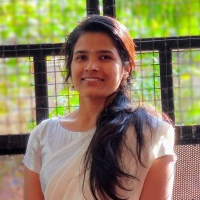
Arunakumari B. N.
Work place: Department of Computer Science and Engineering, BMS Institute of Technology and Management, Bengaluru, India
E-mail: arunakumaribn@bmsit.in
Website:
Research Interests: Programming Language Theory, Mathematical Software, Data Structures and Algorithms, Solid Modeling, Artificial Intelligence
Biography
Dr. Arunakumari B N Completed Ph.D. from Visveswaraya Technological University, Belagavi, Currently Working as Assistant Professor in the Department of Computer science and Engineering at BMSIT, Bengaluru. She published four journals and attended seven International conferences. Her research interest is discrete mathematical Structure, Unified Modeling Language, and Artificial Intelligence.
Author Articles
Indian Sign Language Recognition Using 2-D Convolution Neural Network and Graphical User Interface
By Shashidhar R Arunakumari B. N. A S Manjunath Roopa M
DOI: https://doi.org/10.5815/ijigsp.2022.02.06, Pub. Date: 8 Apr. 2022
The emergence of the sign Language recollection method has a great effect on the day-to-day livings of human beings with hearing disabled individuals utilizing signs to speak with others. Much the same as verbally communicated in dialects, there is no general language as each nation has its communication in language, so every nation has its vernacular of gesture-based communication and in India, they utilize Indian Sign Language (ISL). Over the most recent couple of years, analysts have investigated the computerization of ISL. Here we developed the custom database for 26 English letters and each Letter narrates the 5 times by each person. Train the dataset using 2D CNN and create GUI for recognition. A few endeavors have been made in India and different nations. We attempt to investigate and dissect the ISL that has been made with the mechanization of communication through signing and motion acknowledgment. We attempted to investigate the difficulties that come in the ongoing sign acknowledgment framework. The testing accuracy of the proposed work is 95% and 95% for the validation accuracy.
[...] Read more.Other Articles
Subscribe to receive issue release notifications and newsletters from MECS Press journals